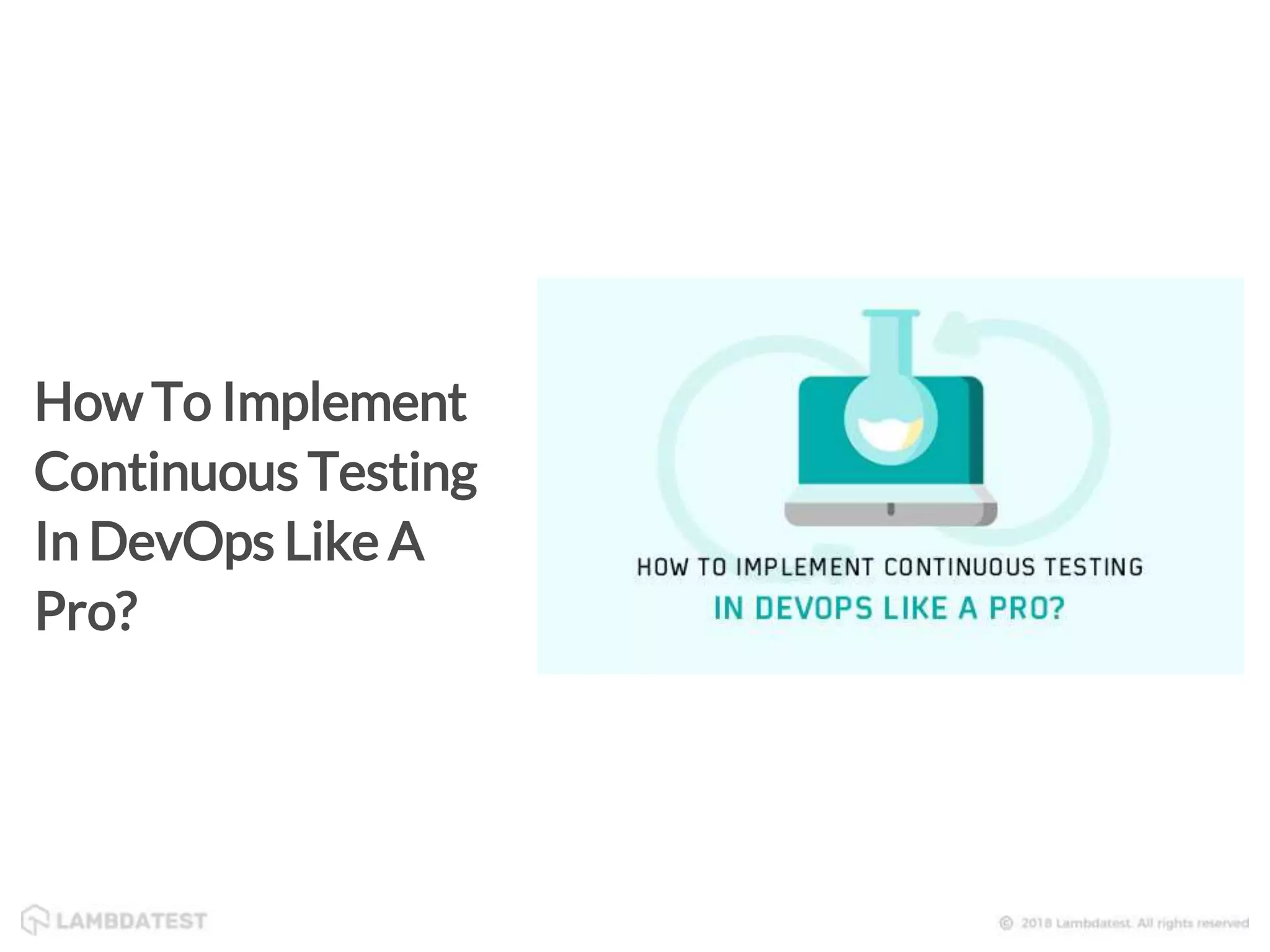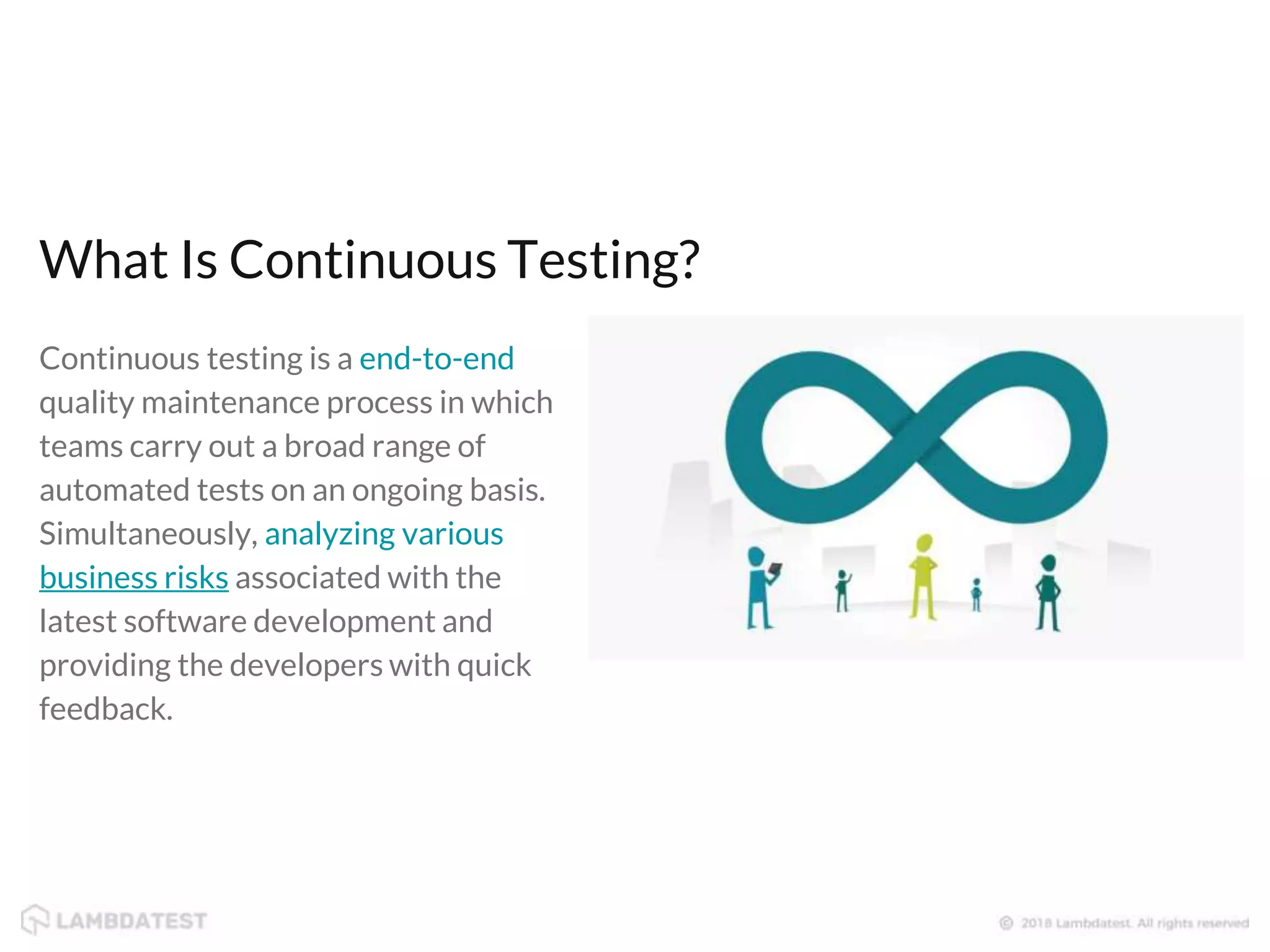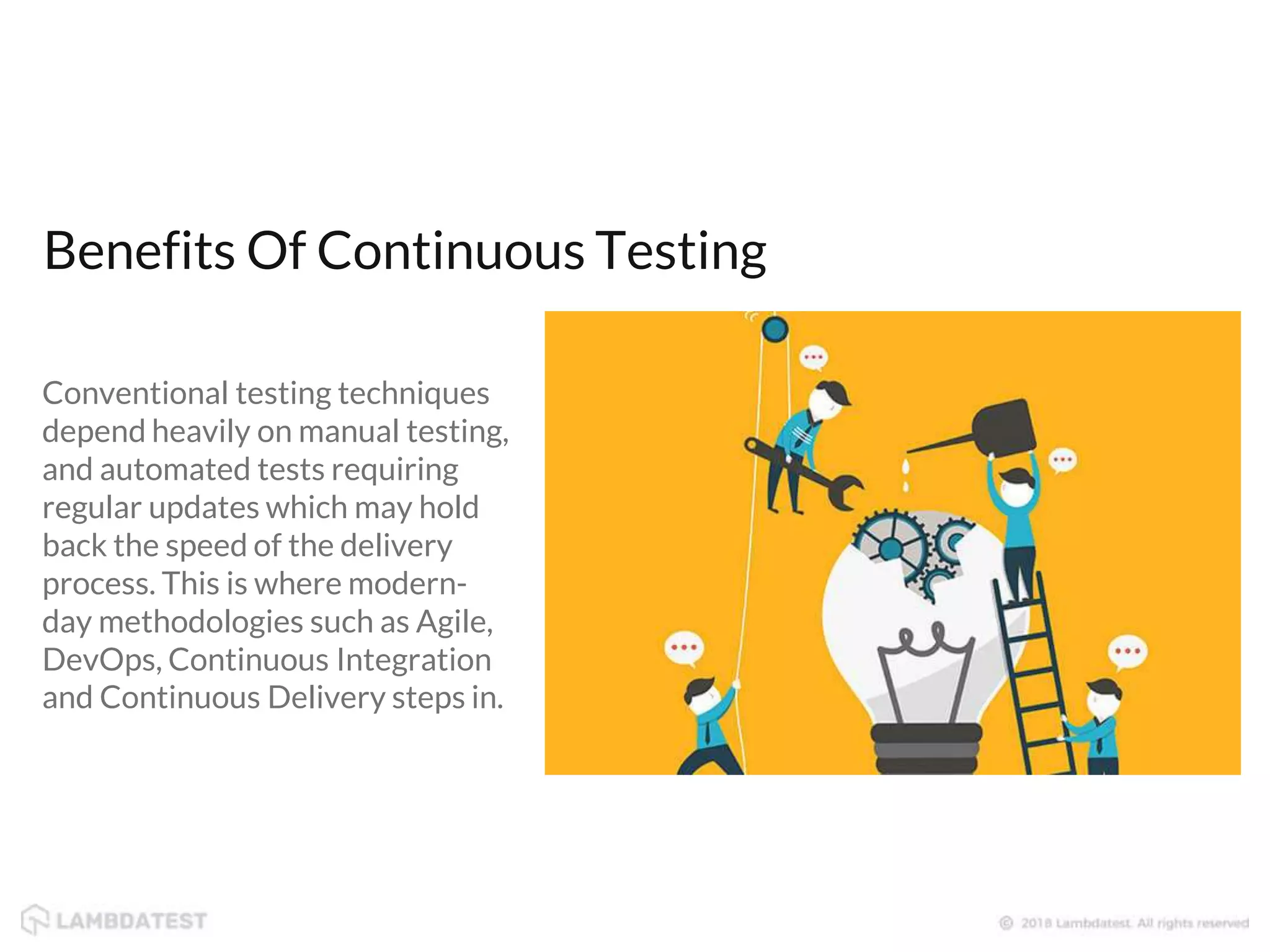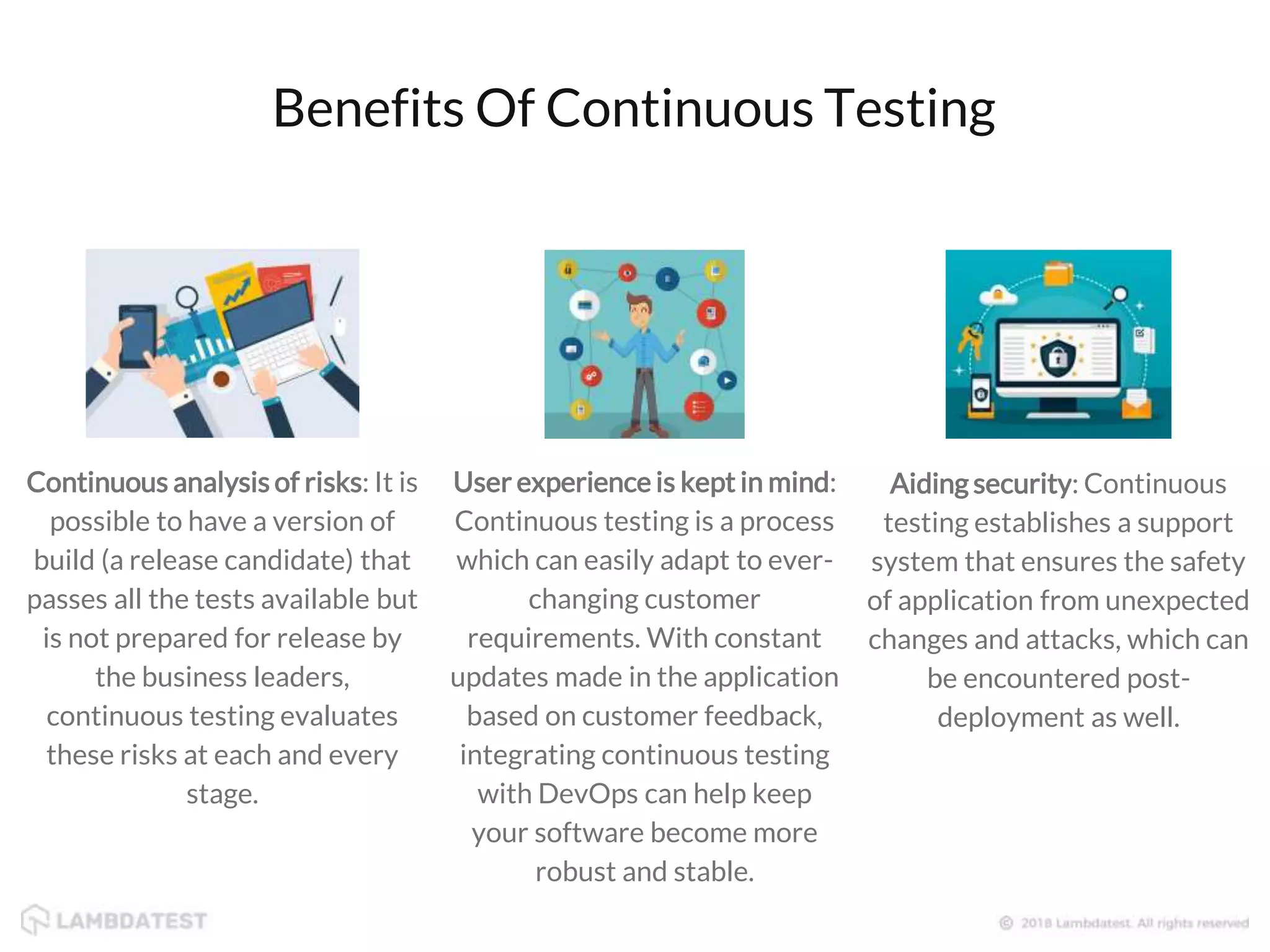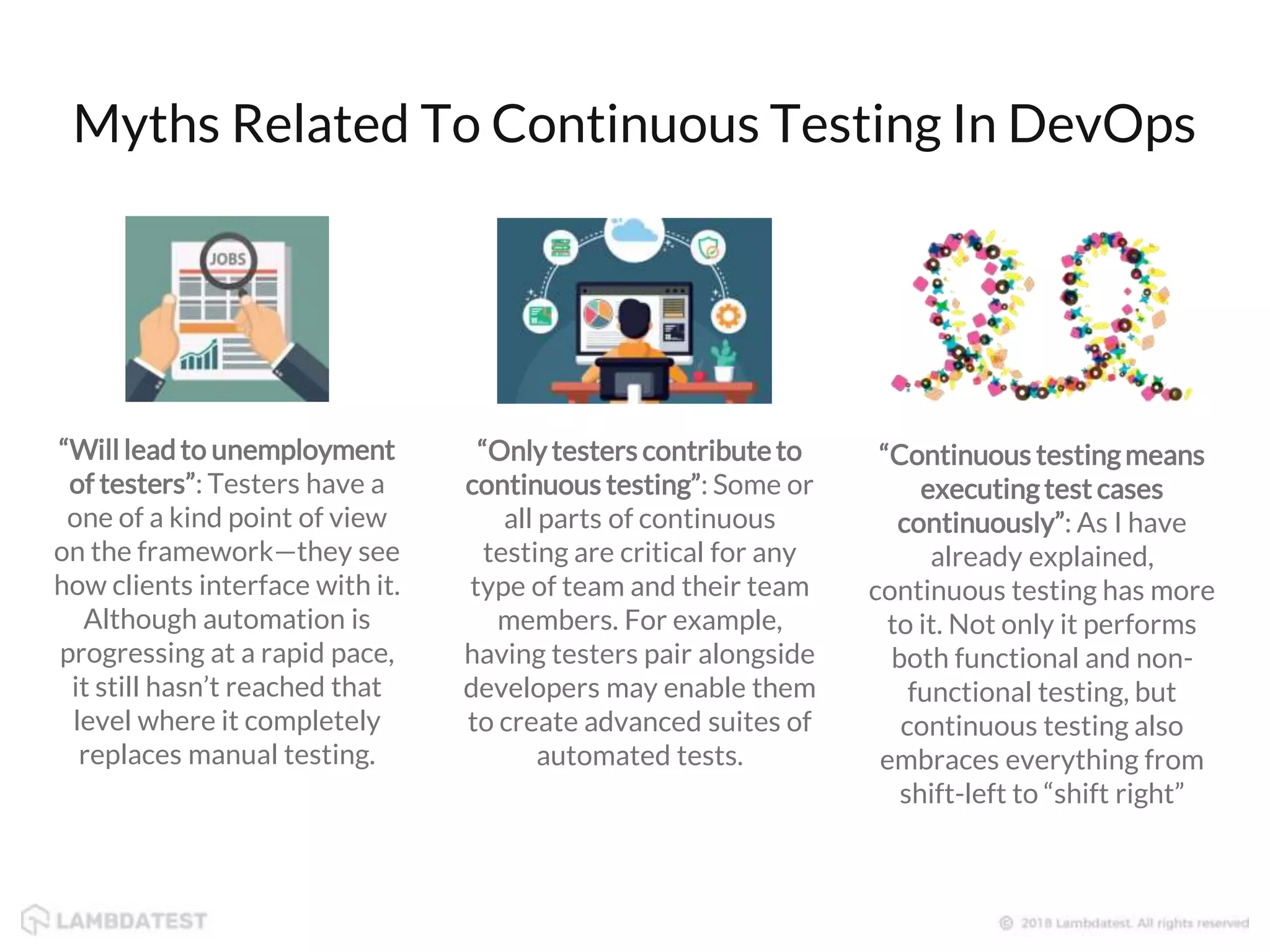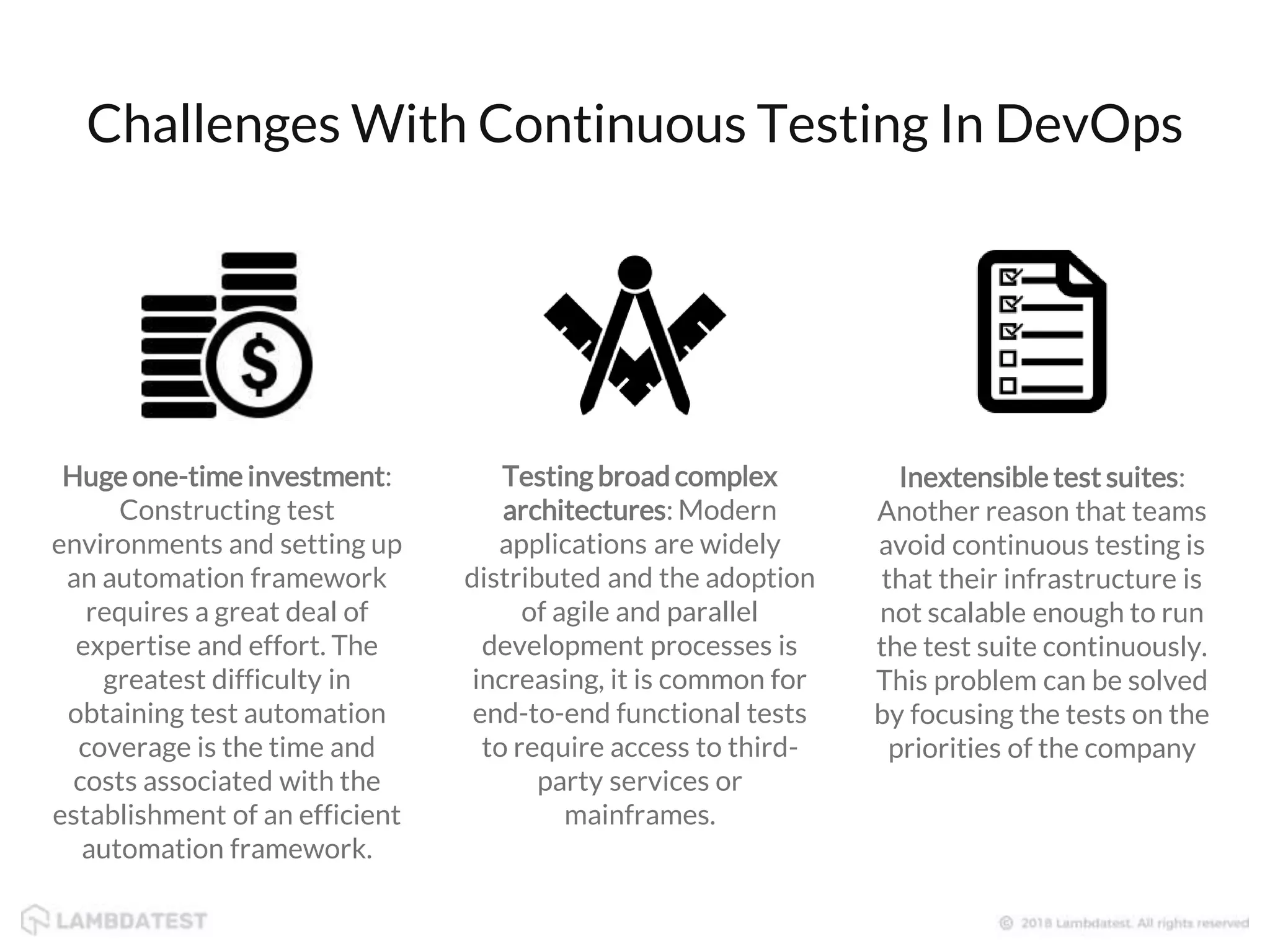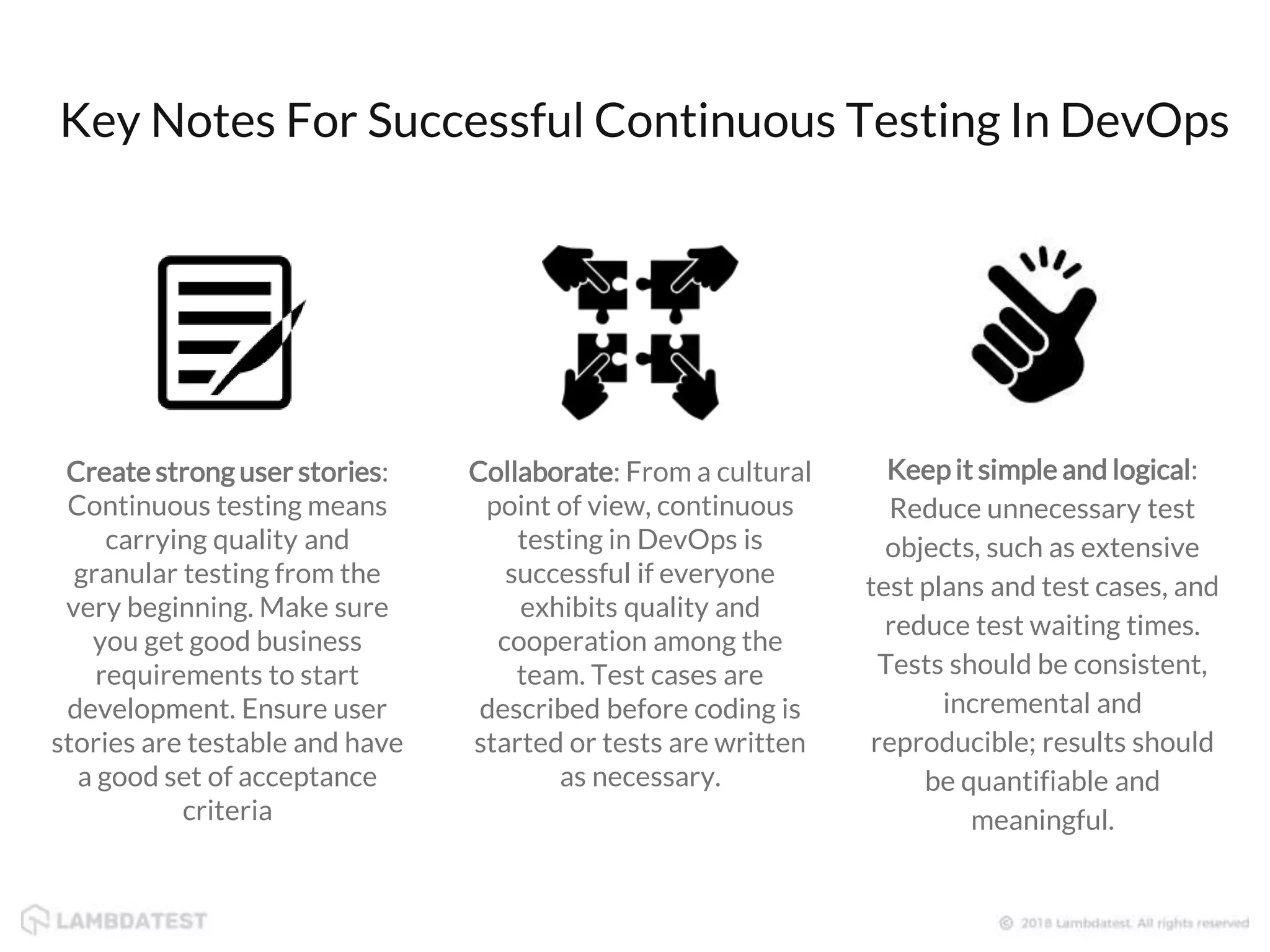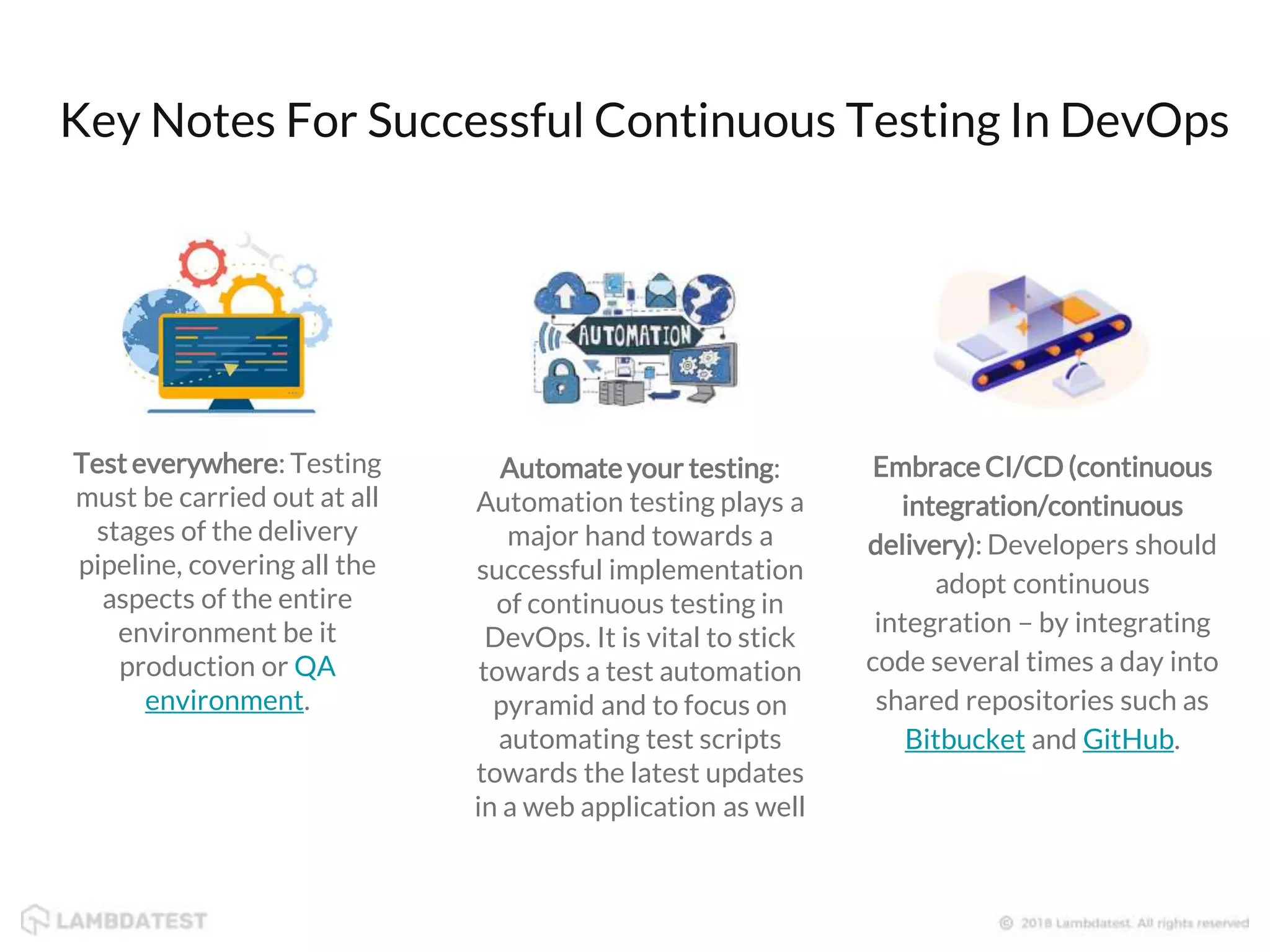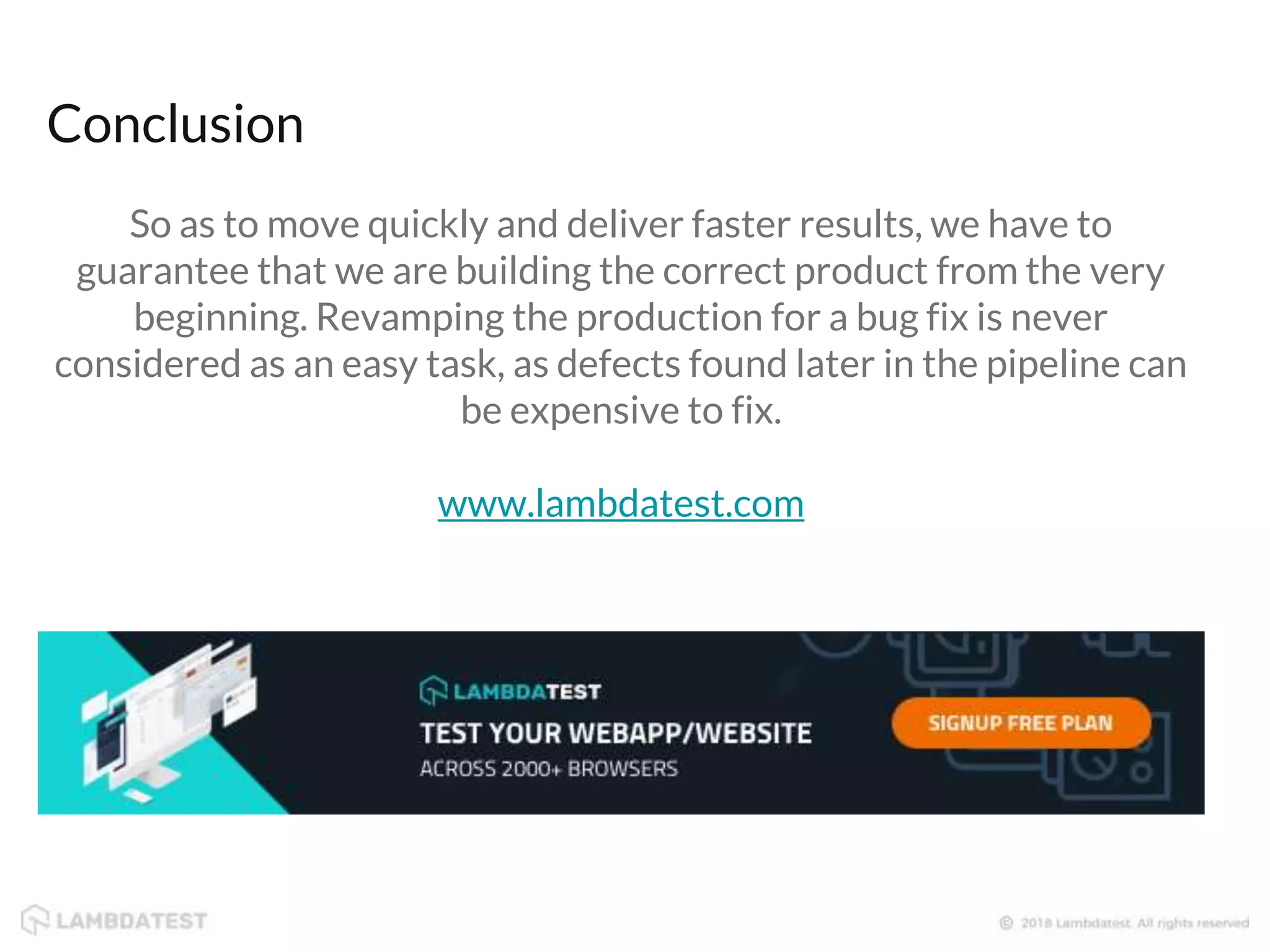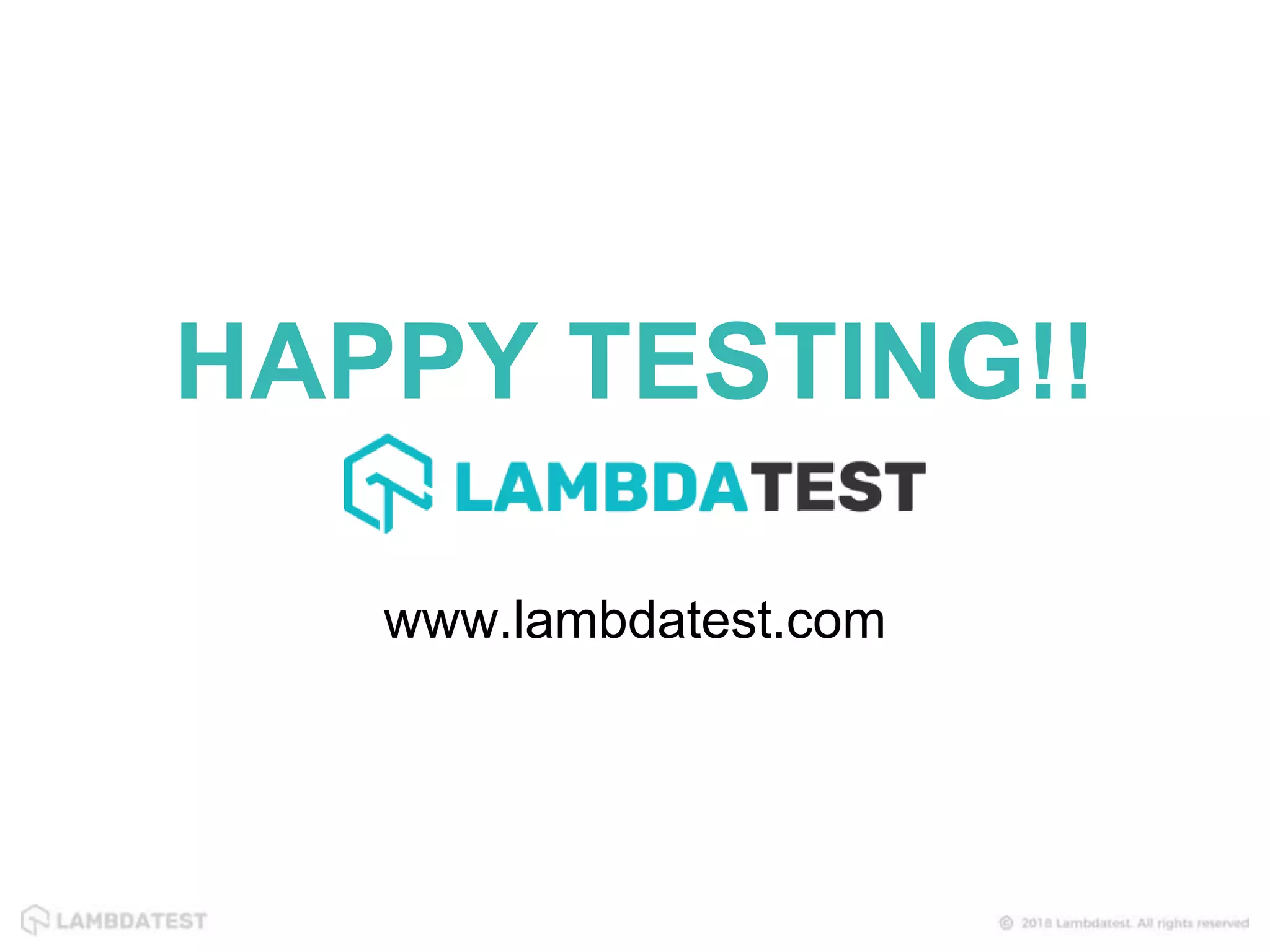The document discusses the implementation of continuous testing in DevOps, emphasizing its role in ongoing automated testing and risk analysis during software development. It highlights the benefits of continuous testing, such as improved user experience and security while debunking common myths that it would lead to tester unemployment or is solely the testers' responsibility. Key practices for success include creating testable user stories, fostering collaboration, simplifying testing processes, and automating tests throughout the delivery pipeline.

